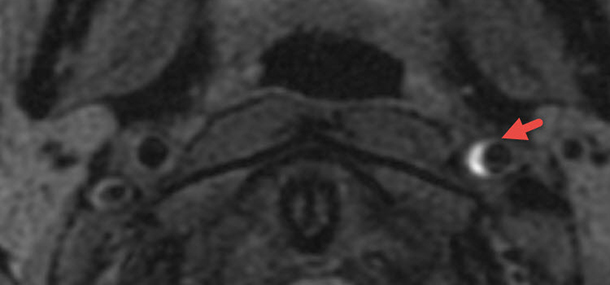
A stroke results from decreased blood flow to the brain. This may result either from an occlusion, or injury to an artery supplying blood to the brain, or a vein draining blood from it. High blood pressure, diabetes, and atherosclerosis are common causes of strokes in the adult population. However, causes of pediatric strokes are much more diverse. These include structural heart or vascular problems, Sickle cell disease, infections, trauma, and clotting problems.
A stroke in an adult patient is often readily suspected by family members and healthcare workers, as the patient may present with an acute inability to speak or move one side of their body. However, pediatric patients, especially infants and toddlers, may present with more subtle or nonspecific symptoms such as irritability, feeding difficulties, or vomiting. These symptoms are easily confused with other conditions that occur in children, so a stroke diagnosis may be and is often delayed in children. Children may initially be suspected of having an infection, a seizure, or even a tumor before a stroke diagnosis is questioned.
Radiology plays an important part in the diagnosis of stroke. A head CT, often the initial study ordered in the acute setting, may demonstrate a bleed in the brain or area of swelling that raises the concern of a stroke. CT findings may be very subtle in an early stroke; however this study is quick and can usually be performed without sedating your child. A brain MRI and MR angiogram (MRA) may then be performed, which will help to clarify the diagnosis. An MRI is a much longer study and may require that your child be sedated in order to complete the examination, but it is more sensitive in diagnosing an early stroke. A catheter angiogram of the blood vessels supplying blood to the brain may also be needed, and this is performed by an interventional radiologist. In some cases, the interventional radiologist may not only help to diagnose the cause of a stroke, but may also help to treat a stroke by injecting medication directly into an abnormal blood vessel. This procedure is not as readily performed in children because of the delay in stroke diagnosis and more diverse stroke causes encountered in this age population.
Unfortunately, a stroke may result in the death of a patient and often results in permanent brain injury. Patients may develop significant cognitive and motor delays, and may develop long-term seizures as a result of the brain injury. Luckily, with advances in imaging and increased awareness of pediatric stroke, some of the challenges in recognizing and treating these young patients have been overcome. Cincinnati Children’s Radiology Department constantly upgrades our technology and techniques to ensure your child is receiving the best possible care; ultimately changing their outcome.
The MRI on the left side shows an area of bleeding (red arrow) in the wall of one of the large arteries that deliver blood to the brain. This injury of the wall of the artery lead to a stroke. The image on the right side shows the areas of the brain affected by the stroke (blue arrows).
Contributed by Dr. Marguerite Caré and edited by Tony Dandino (RT-MR).